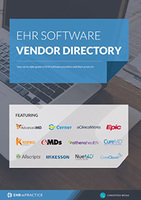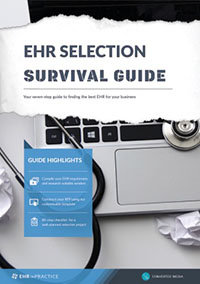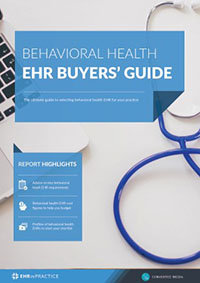Cut the noise, you need to adopt a streamlined orthopedic EHR
As orthopedic surgeons, we must listen to our patients, understand their physical needs and challenges, and identify treatments that lead to the best possible outcomes.
Take all of that and couple it with documenting and reporting the visit, compliance, and the administrative duties of running an efficient practice. We have long work days and constantly strive to achieve a harmonious work-life balance.
In fact, a recent study by the University of Wisconsin and the American Medical Association (AMA) found that physicians spend almost six hours on EHR data entry during a typical 11.4-hour workday. With that said, it is apparent that if we don’t adopt an appropriate technology that is specialty-specific, has an intuitive user interface, automated reporting and Merit-based Incentive Payment System (MIPS) compliance assistance, our long days will surely persist.
The importance of usability in orthopedic EHR systems
The usability of EHR systems has become extremely important over the past few years and continues to garner attention as adoption marches forward and orthopedic-specific needs evolve.
"Though necessary and valuable, these additional administrative tasks have been a major contributor to skyrocketing physician burnout rates."
If an EHR system is not user-centric and specialty-specific, it can negatively impact the amount of time physicians spend on patient documentation and compliance reporting. Though necessary and valuable, these additional administrative tasks have been a major contributor to skyrocketing physician burnout rates. Research from a University of Wisconsin & AMA study cites factors contributing to physician burnout as “inappropriate allocation of EHR tasks to clinicians,” as well as “technology-supported guidelines that have placed hard stops in clinical workflows,” among other challenges.
Find EHRs to suit your orthopedic practice with this comprehensive EHR vendor directory
The AMA is leveraging the study to urge health IT developers to improve EHR usability and consider the essential need to prioritize physician satisfaction. Here are eight priorities that the AMA has outlined as a framework to boost usability:
- Enhance physicians' ability to provide high-quality patient care
- Support team-based care
- Promote care coordination
- Offer product modularity and configurability
- Reduce cognitive workload
- Promote data liquidity
- Facilitate digital and mobile patient engagement
- Expedite user input into product design and post-implementation feedback
There is good news though. Orthopedic surgeons can meet these priorities and excel under value-based care by selecting the best EHR system for their practice. Using EHR technology that was developed by practicing orthopedic surgeons allows the workflow to be specific to your needs.
In addition to having an ortho-specific knowledge and an adaptive learning engine within an EHR system, it should provide MIPS/MACRA compliance capabilities and assistance. Even with the shift in the industry to consolidation and value-based care, you should not have to worry whether or not you’ll be able to succeed.
Understanding your numbers, simply
An important feature physicians should consider when selecting an EHR system is the ability to generate and access actionable data and insights. An EHR system must capture structured, actionable data and automate patient and regulatory compliance documentation in near real-time. Structured data is crucial because it’s captured and stored in a fixed field within a record, so it can mined for meaningful clinical and operational insights. Once this data is obtained, there is a need for electronic tools that can help you visualize and analyze it.
While analytics tools are gaining more traction within EHR solutions, look for two essential capabilities:
- Real-time comparative benchmarking of quality and cost data to your peers
- Easy-to-understand visualizations of financial information to improve your bottom line and operations
It is essential, particularly in private practices, to have access to real-time comparative benchmarking of both quality and cost data to succeed under MIPS. Analytics tools should not only highlight individual clinician performance and practice performance, but also where individual practitioners and groups stand compared to other orthopedic surgeons and practices. Having peer-to-peer comparisons in real-time can be a catalyst for making operational changes, if necessary, to improve the efficiency and profitability of a practice. This transparency provides the opportunity to make appropriate updates to a practice’s operational workflow and can contribute to enhanced reimbursement through MACRA/MIPS.
From patient check-in to discharge, an EHR system should enable you to easily access, record and treat patients, all while documenting compliance efforts. It should do all of this without creating more work for you and your staff or causing major disruption to your daily practice routine. Identifying an EHR system with a friendly user experience and interface, that includes the tools necessary to reach your bottom line, will positively impact your patient and practice’s health.
Free white paper

EHR Vendor Directory
Get the most up-to-date directory of EHR software vendors. Find the best software for your practice.

Featured white papers
Related articles
-

5 key stakeholders in your EHR selection
Learn about the individuals that, when consulted early and often, can make your EHR selection pro...
-

5 important areas of EHR training during implementation
Successful EHR implementation is not possible without crucial EHR training
-

Top oncology EHRs to kickstart your selection shortlist
Learn about some of the leading oncology EHR systems on the market including CureMD, ARIA Oncolog...




